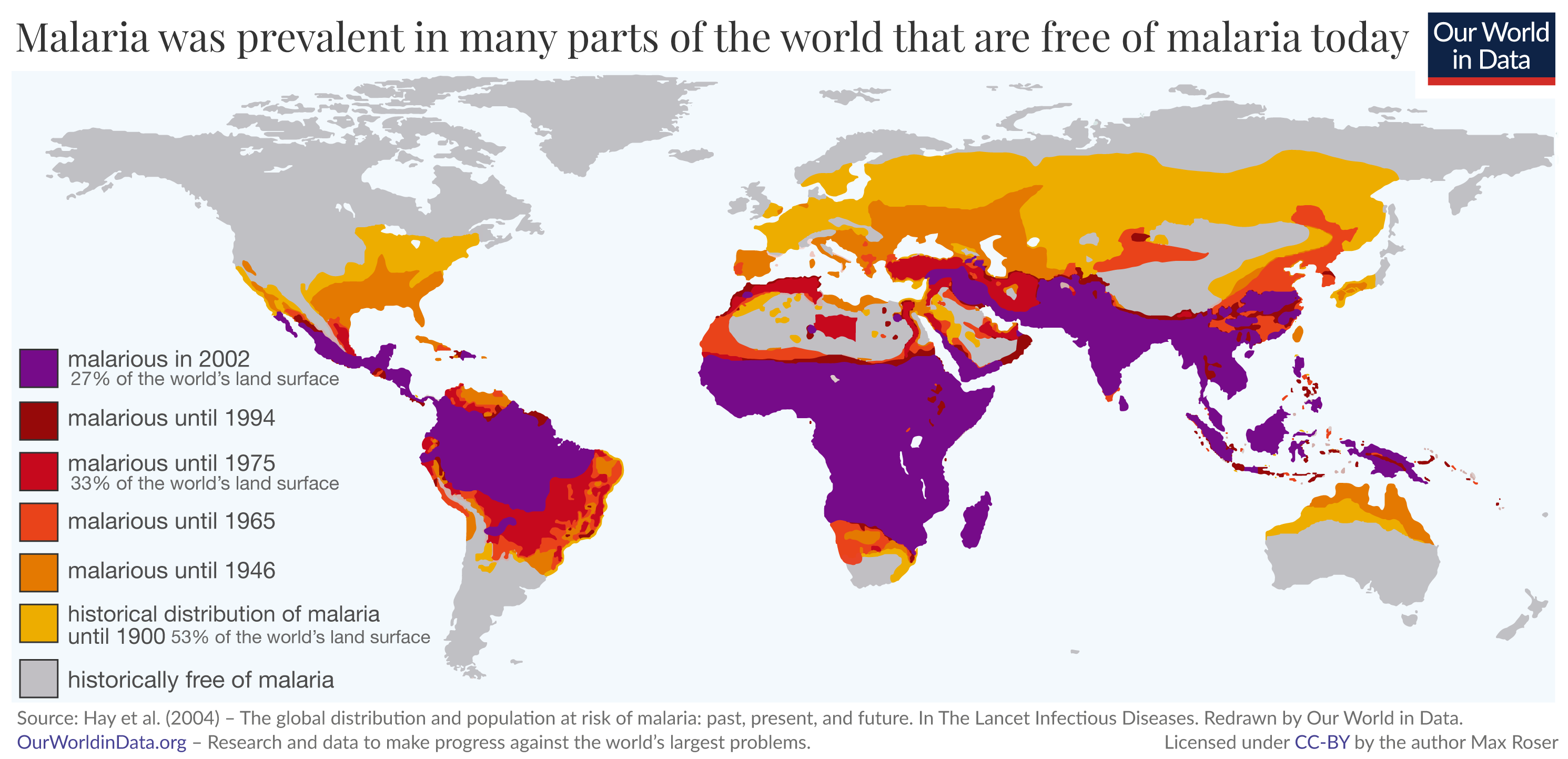The animal that kills most people every year isn’t the one that first comes to mind. When it comes to killing humans, no other animal comes close: Mosquitoes kill almost half a million people per year. One death every minute.
Mosquitoes are so very dangerous to us because they carry lethal diseases. The half a million annual deaths are caused by Dengue, Japanese encephalitis, Yellow fever, some smaller diseases and the very worst of them: Malaria.1
Malaria is a disease that is transmitted from person to person by infected mosquitoes. The bite of an infected Anopheles mosquito transmits a parasite that enters the victim’s blood system and travels into the person’s liver where the parasite reproduces. There the parasite causes a high fever that involves shaking chills and pain. In the worst cases malaria leads to coma and death.
From half the world to a quarter of the world within one century
Malaria left its mark on our history, our bodies, drinks, and for thousands of years the deaths of people in all corners of the world.
But in the last few generations, humanity gained ground in this long-lasting battle against the disease. The map shows in which regions of the world malaria is prevalent today (in purple) and where it was prevalent in the past. Just a few generations ago malaria was common in many more places around the world than it is today. Over the course of the 20th century the disease was eliminated in many populous regions of the world, saving the lives of millions.
What the map makes clear is that malaria is not a tropical disease, but a disease that was eliminated everywhere except for the tropics. Historically malaria was prevalent in Europe and North America – poet Friedrich Schiller contracted the disease in Mannheim, Oliver Cromwell in Ireland, and Abraham Lincoln in Illinois.2
Since then the disease has been eliminated not only there, but also in East Asia and Australia and in many parts in the Caribbean, South America, and Africa.
The researchers estimate that historically – and up to around 1900 – our ancestors were at risk from malaria across about half of the world’s land surface (53%). Since then the area where humans are at risk of malaria contracted to a quarter (27%).
The WHO reports that the global mortality rate has declined by 90% between 1900 and the end of the 20th century.3
Why are these parts not malarious anymore?
Three factors were responsible for this global reduction of malarious regions:4
First, public health measures, especially the widespread use of insecticides to attack the mosquito. Second, the drainage of swampland for expanding agricultural land had the side effect of restricting the breeding grounds for mosquitoes. And third, social and economic development which not only made treatment available to those that were infected, but also led to improvements in housing conditions which lowered the chances of infection in the first place.
All three factors – insecticides, land use change, and economic development – were major reasons that Europe and the other regions shown in shades of yellow, orange, and red are free of malaria today.
Map of past prevalence of malaria5
